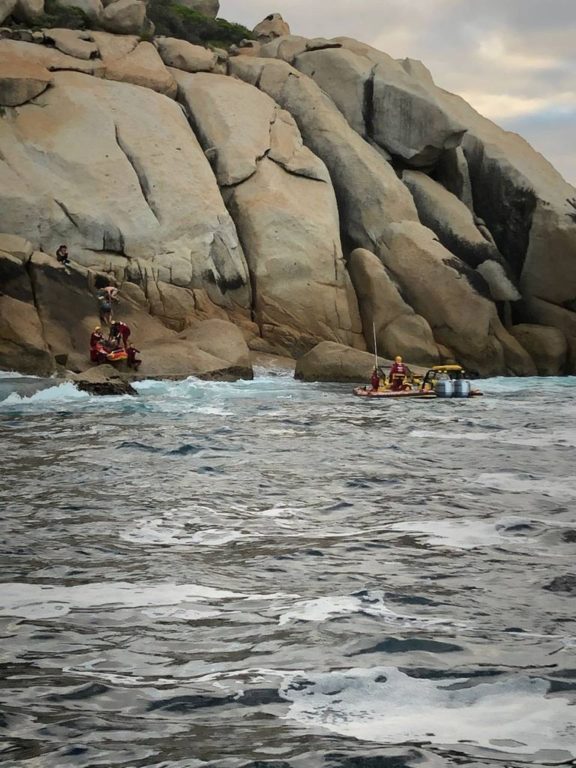The Bos 400 wreck at Maori Bay on the Atlantic Seaboard is a popular location for adventure-seeking travellers to explore. However, the NSRI are appealing to the public to avoid the wreck as well as the surrounding rocks at all costs.
Boarding the wreck is prohibited as it poses serious dangers to the public, says the NSRI. Even the sea surrounding the wreck is dangerous because of jagged corroding metal that has collapsed into the sea.
Over the past month, the NSRI launched three rescue operations after people found themselves in danger after boarding the wreck or swimming in its surrounding waters.

The NSRi quickly responded to reports of a drowning in progress at the Bos 400 wreck on Saturday afternoon, February 20. A group of twelve young adults were found, one of whom had suffered a non-fatal drowning accident and hypothermia after getting caught in currents that naturally swirl around the wreck.
The group admitted that they had come to the wreck to jump into the water from the crane and from the superstructure. Luckily, the man was rescued by emergency services and taken to the NSRI base in Hout Bay. Following medical treatment, he was released and required no further assistance.
In the past few weeks in two separate incidents, a young female and a young male suffered serious injuries after jumping off the Bos 400 crane into the sea. The NSRI is concerned that increased recreational activity in and around the wreck may lead to more severe accidents.
The Bos 400 wreck ran aground in June 1994. What could be salvaged was, despite increasingly dangerous conditions in and around the wreck. When salvage operations were completed, the South African Maritime Safety Authority (SAMSA) posted signage prohibiting the boarding of the wreck, citing the dangers the wreck poses from the corroding and collapsing metal infrastructure.
The signage prohibiting boarding of the wreck has also corroded and is no longer visible.
‘Over the years the wreck has corroded significantly resulting in part of the crane and the super structure to collapse into the sea and storm conditions have washed metal debris in amongst the rocks surrounding Maori Bay,’ explains the NSRI.
‘The corroding metal that has fallen into the sea surrounding the wreck adds to the inherent dangers with jagged rusting metal lying submerged or semi submerged around the wreck and in and around Maori Bay.
‘It is simply a matter of time for corrosion to cause more of the crane and the super structure to collapse creating an extremely dangerous environment to unsuspecting public members who it appears are being encouraged to use the wreck for recreational purposes. To add to the danger this is an extremely difficult area in which to conduct a rescue operation.’
The metal infrastructure corrodes and rusts from the centre of the metal outwards due to salt water corrosion. This means that where rust is visible on the surface of the metal, it has completely corroded on the inside and is at risk of total collapse.
The pathway leading to the wreck, made up of a section of the Karbonkelberg hiking trail that starts at Rocket Road, Llandudno, is also barely accessible, where parts of the trail include steep inclines with no visible pathway. This also hampers land-based rescue operations to reach the barely accessible area.
Picture: NSRI















